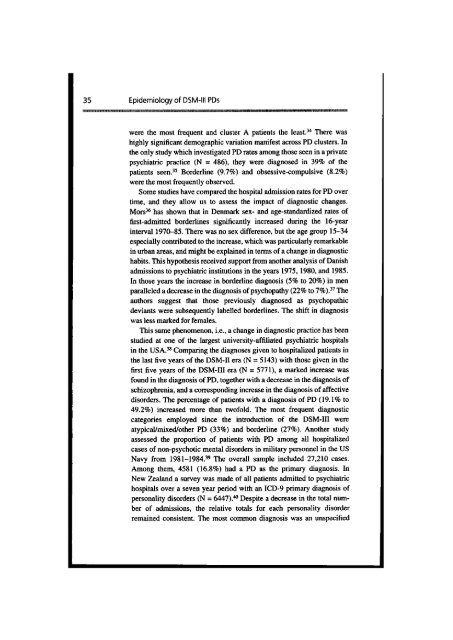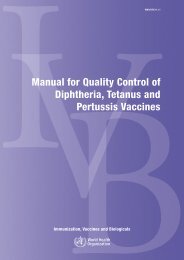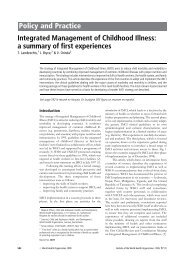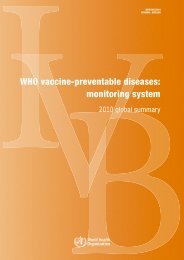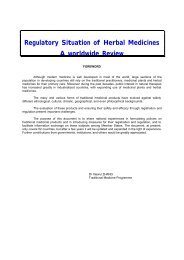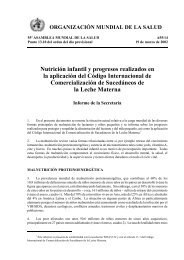IPDE - Extranet Systems - World Health Organization
IPDE - Extranet Systems - World Health Organization
IPDE - Extranet Systems - World Health Organization
You also want an ePaper? Increase the reach of your titles
YUMPU automatically turns print PDFs into web optimized ePapers that Google loves.
35 Epidemiology of DSM-Ill PDs<br />
were the most frequent and cluster A patients the least." There was<br />
highly significant demographic variation manifest across PD clusters. In<br />
the only study which investigated PD rates among those seen in a private<br />
psychiatric practice (N = 486). they were diagnosed in 39% of the<br />
patients seen.'= Borderline (9.7%) and obsessive-compulsive (8.2%)<br />
were the most frequently observed.<br />
Some studies have compared the hospital admission rates for PD over<br />
time, and they allow us to assess the impact of diagnostic changes.<br />
Mors36 has shown that in Denmark sex- and age-standardized rates of<br />
first-admitted borderlines significantly increased during the 16-year<br />
interval 197&85. There was no sex difference, but the age group 15-34<br />
especially contributed to the increase, which was particularly remarkable<br />
in urban areas, and might be explained in terms of a change in diagnostic<br />
habits. This hypothesis received support from another analysis of Danish<br />
admissions to psychiatric institutions in the years 1975. 1980, and 1985.<br />
In those years the increase in borderline diagnosis (5% to 20%) in men<br />
paralleled a decrease in the diagnosis of psychopathy (22% to 7%):' The<br />
authors suggest that those previously diagnosed as psychopathic<br />
deviants were subsequently labelled borderlines. The shift in diagnosis<br />
was less marked for females.<br />
This same phenomenon, i.e., a change in diagnostic practice has been<br />
studied at one of the largest university-affiliated psychiatric hospitals<br />
in the USAJ8 Comparing the diagnoses given to hospitalized patients in<br />
the last five years of the DSM-II era (N = 5143) with those given in the<br />
first five years of the DSM-I11 era (N = 5771). a marked increase was<br />
found in the diagnosis of PD, together with a decrease in the diagnosis of<br />
schizophrenia, and a corresponding increase in the diagnosis of affective<br />
disorders. The percentage of patients with a diagnosis of PD (19.1% to<br />
49.2%) increased more than twofold. The most frequent diagnostic<br />
categories employed since the introduction of the DSM-111 were<br />
atypicaUmixedlother PD (33%) and borderline (27%). Another study<br />
assessed the proportion of patients with PD among all hospitalized<br />
cases of non-psychotic mental disorders in military personnel in the US<br />
Navy from 1981-1984.39 The overall sample included 27,210 cases.<br />
Among them, 4581 (16.8%) had a PD as the primary diagnosis. In<br />
New Zealand a survey was made of all patients admitted to psychiatric<br />
hospitals over a seven year period with an ICD-9 primary diagnosis of<br />
personality disorders (N = 6447).40 Despite a decrease in the total number<br />
of admissions, the relative totals for each personality disorder<br />
remained consistent. The most common diagnosis was an unspecified


